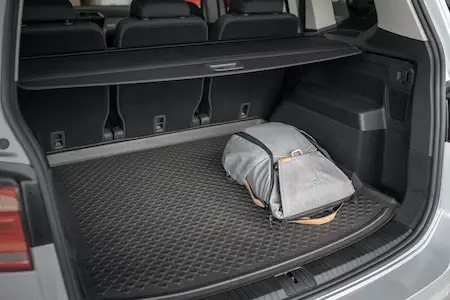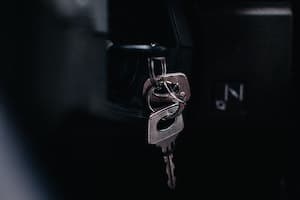A bad ground wire causes SO many issues in all electrical systems and careful thorough grounding applies especially to automotive electrical. A bad ground wire can play funny tricks that are difficult to diagnose and can ruin electrical components. Starting issues, poor power output for lights and other electrical items in your car may be a sign that you have a bad ground.
Perhaps you changed/ upgraded your car battery cables like I did and took a step back to wonder if you need all of the wires from the negative terminal on the battery and whey they are there. I wondered, if it was necessary to have one cable going to the engine, and one going to the frame. Is it possible to just run one wire to the engine, since the engine is connected to the frame?
A secure ground connection is required between the negative battery terminal to the body of the car as well as directly to the engine. A connection is commonly made between the body and the chassis as well. A common wire can be run directly to the starter, or close to it mounted to a bolt on the engine bell housing.
Multiple connections are required because different parts of the car are insulated from each other. Such as the engine from the chassis and the chassis from the body.
High current flow between the starter and the battery and the alternator make these two the most important components on your vehicle to have a thick gauge solid ground wire and it is critical to have secure, clean ground connections in the right locations to keep a car electrical system running like it should.
Car Battery Ground Requirements
A chassis ground is needed in conjunction with the ground to the engine because although the engine is bolted to the frame, the engine mounts insulate the engine from the chassis with rubber mounts for vibration reduction.
It is possible to use a single ground to the engine block but if this is the case, a second ground wire from the block to the frame or chassis is required. This is not the preferred method of grounding since multiple grounds to the frame, and body, and engine will provide a more secure ground.
Is the car battery connected to the chassis?
The car battery should be connected to the chassis of the car as well as the body of the car and the engine block.
There are countless places to make a ground connection on the car, but I will address some of the best and most common places.
The Best Place to Ground the Battery
My battery had a wire from the negative terminal connecting to the alternator bracket. I did some digging to determine if this was the best place for the ground or if there was a better ground location than the alternator bracket. This is what I found.
Where is the best place to ground the battery?
The best place to connect a cable from the negative battery terminal to the engine is at a vacant threaded hole directly into the block. Most often, engine manufacturers provide a threaded hole specifically for this purpose. The next best place on the engine you can connect the ground is using a bell housing bolt.
Besides being connected to the engine block, ensure that the negative battery terminal is connected to the body of the car. The best place for this connection is close to the battery on the inner fender well. A connection between the engine and firewall is common and convenient also.
The alternator bracket is not the best place for a common connection because it is often made of aluminum or another material and will corrode of it is made of dissimilar metals than the surroundings and used for the ground connection.
Why Car Batteries are Grounded
To understand the reason for several ground/common wires from the battery, a brief basic overview of how the car battery system works is in order.
Why are car batteries grounded?
Car batteries are grounded to the body and chassis of the car, and the engine to use the car chassis and body as the return path for the circuits of the various electrical components used in the car.
What does the ground do?
Ground completes the electrical path of current flow from the battery.
The highest electrical load in the car is the starter. Followed by the alternator. Other things in the car like the lights, fans, and radio draw much less power.
For this reason, the best ground is as close to the starter as possible. I recommend directly to the starter even.
If it is at least close to the starter, the engine block made of iron is an excellent conductor and is no problem if the ground is a few feet away as long as it is a solid connection.
Every electrical component in the car like the starter, windows, fan, connect to ground to return the current to the (-) terminal of the battery. The body of the car acts as an extension of the (-) terminal.
To explain this further, two wires could be run directly from the (+) and (-) battery terminals to each and every electrical device in the car but by using the body as the return route to the negative terminal, only one wire is required.
On cars when the chassis is non-conductive, such as cars with a carbon fiber or fiberglass, individual negative cables must be run. chassis and bodywork, separate negative cables have to the run.
“Ground” is just another word for a “common return path”.
Because ground is used to describe the return path to the battery it does not mean that the battery is literally going to ground, and sometimes the term “common” is a less confusing more appropriate term to use.
Because car chassis are made of iron which is highly conductive, it serves as the return path/common for the electrical circuits in a car.
Grounding a Battery in the Trunk

Some cars are produces with the battery located in the trunk.
Other people decide that the weight distribution of a the heavy battery in the back of the car rather than the front along with the already heavy engine bay would bring significant benefits.
When the battery is located in the trunk by the manufacturer, it is most often due to the lack of space in the engine bay but can also be for the weight saving aspect.
When designed from the factory with the battery in the back, the battery is most often grounded straight to the body of the car.
Where do I need to ground a relocated battery in the trunk?
If you are considering relocating your battery to the trunk, there is no need to run a cable all the way up to the engine provided that you secure the (-) terminal to the chassis of the car close to the battery and establish a secure connection at the front of the car as well from the chassis to the engine block.
An easy place to secure a ground for a battery relocated to the trunk is through the same hole in the trunk as the (+) cable and ground it to the frame near the back of the car.
Also from the same bolt a ground cable that runs the length of the car and is bolted to the engine block.
The battery should be grounded to the frame of the car as close to the battery as possible at the back of the car. At the front of the car, a connection between the frame and the engine block is necessary and is equivalent to routing a wire from the battery directly to the engine block.
Tap a hole in rear frame rail and bolt it to the frame. Also from the engine mount to the frame rail at the front of the car.
Use star washers and ensure that the connection is clear of paint.
A major problem is undersized grounding wires even in battery relocation kits
The gauge wire that you use depends on the length of the run of the wire and the current that is going to be flowing through it. Generally a 4 gauge wire is sufficient for car batteries for a short run.
If you decide that you would like to run a wire from the battery in the trunk directly up to the engine, (which is a fair idea), a pro tip is to use a thick gauge set of battery jumper cables and they can simply be run together up to the front of the car.
Making Good Ground Wire Connections
When making a ground connection there is a lot of room for error and a poor connection results in a high resistance that when high enough will restrict the current flow from the battery to high current draw components such as your starter. Here are a few things to keep in mind when making a good ground wire connection:
- Inspect ground wires for wear and corrosion – Any funny splices or soldering and the wires should be replaced. Any sign of corrosion should be cleaned.
- Use similar metals. If making a connection to steel, use a steel bolt.
- Use star washers or lock washers to ensure a long term tight connection
- Clean off any paint where the contact is made.
- Consider using dielectric grease to prevent corrosion aiding in a secure connection.
Testing a Good Ground Connection.
A multimeter is a handy tool to have and if you own one, you can test between engine block and frame to determine if you have an adequate ground.
You need to determine the resistance (ohms) between the location of the ground that you are testing and the (-) terminal of the battery.
The less ohms the better. A reading of less than .03 ohms indicates a good ground.
F.A.Q.
Can I ground alternator to battery?
The alternator should be grounded to the battery. But standard practice is to ground the engine block to the negative battery terminal and as long as the connection is close to and secure to the alternator, the body of the alternator provides a solid ground connection.
Should a car battery on a trailer be grounded to the chassis?
The car battery for a trailer should be grounded to the chassis to allow for all the trailer electrical components to complete their circuit through the chassis ground. This makes it possible to run one wire to each electrical component.
Is battery negative the same as ground?
Battery negative is the same as ground for standard 12 volt systems. And is also referred to as “common” which means it is the common return path. (back to the battery).
Can I ground alternator to battery?
Yes generally the alternator case is grounded and connected to the engine and the engine is grounded so a ground on the engine close to the alternator is recommended.
Can a bad ground cause no spark?
A bad ground is capable of no spark provided to the engine. This is due to an increase in electrical resistance restricting the flow of high current required to start the car.


